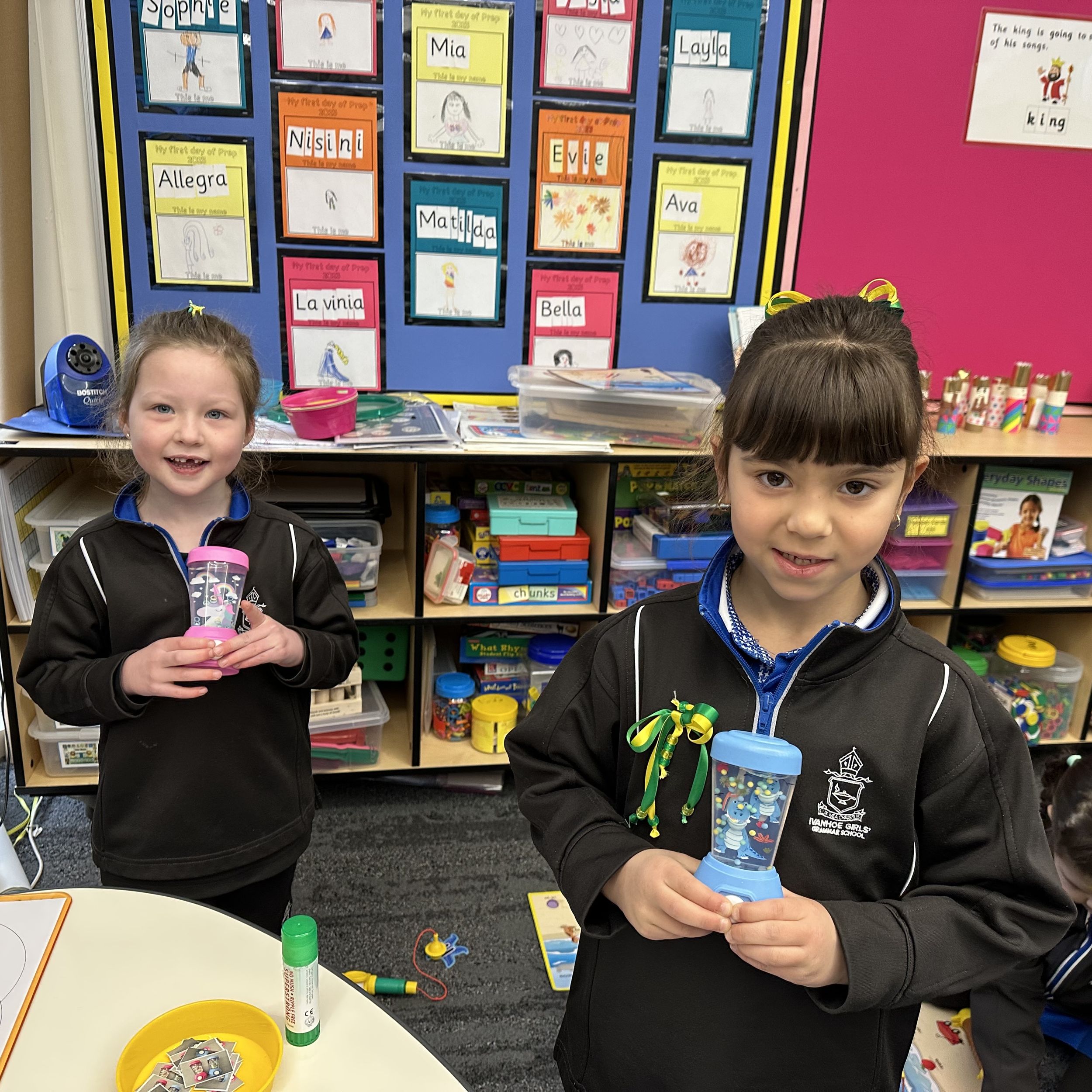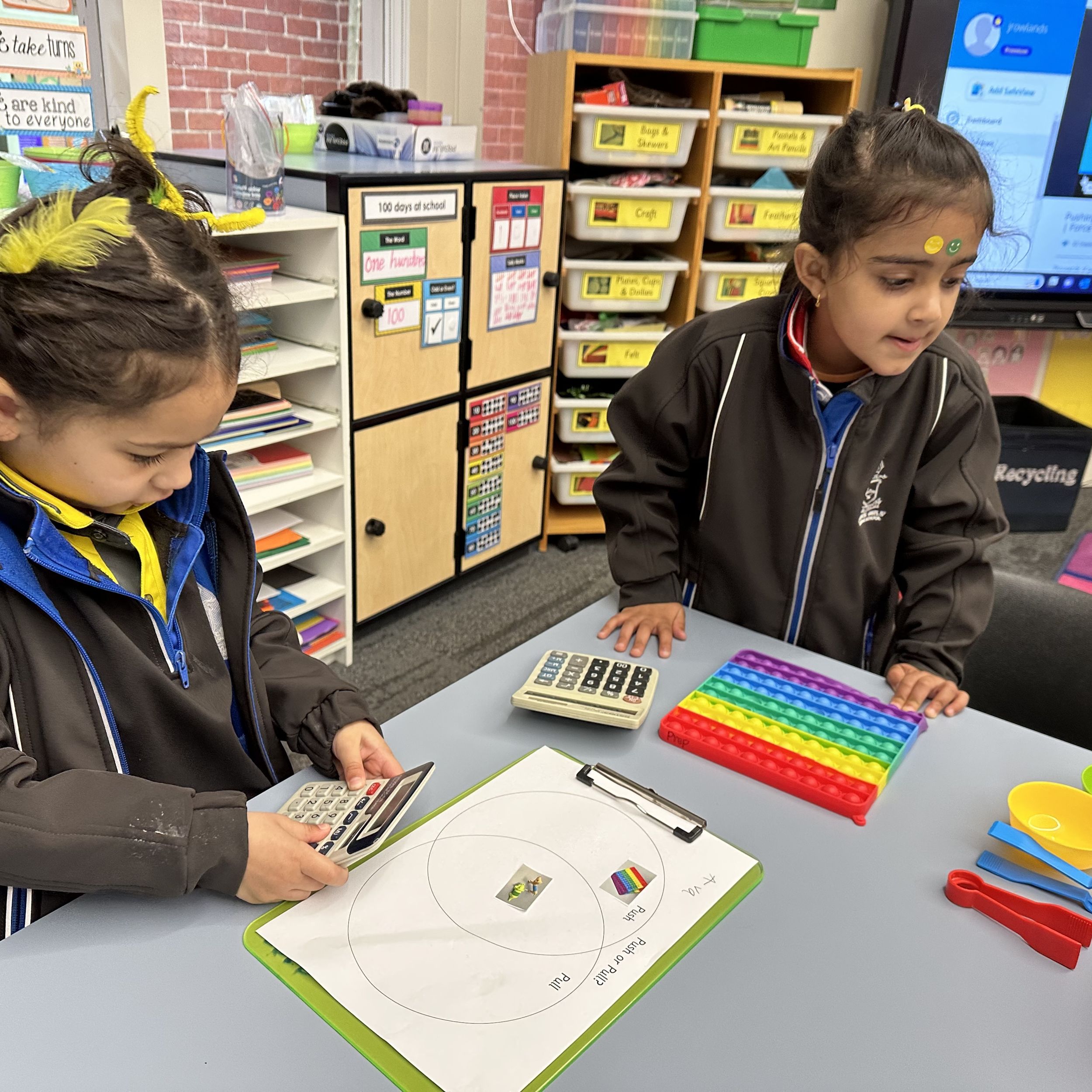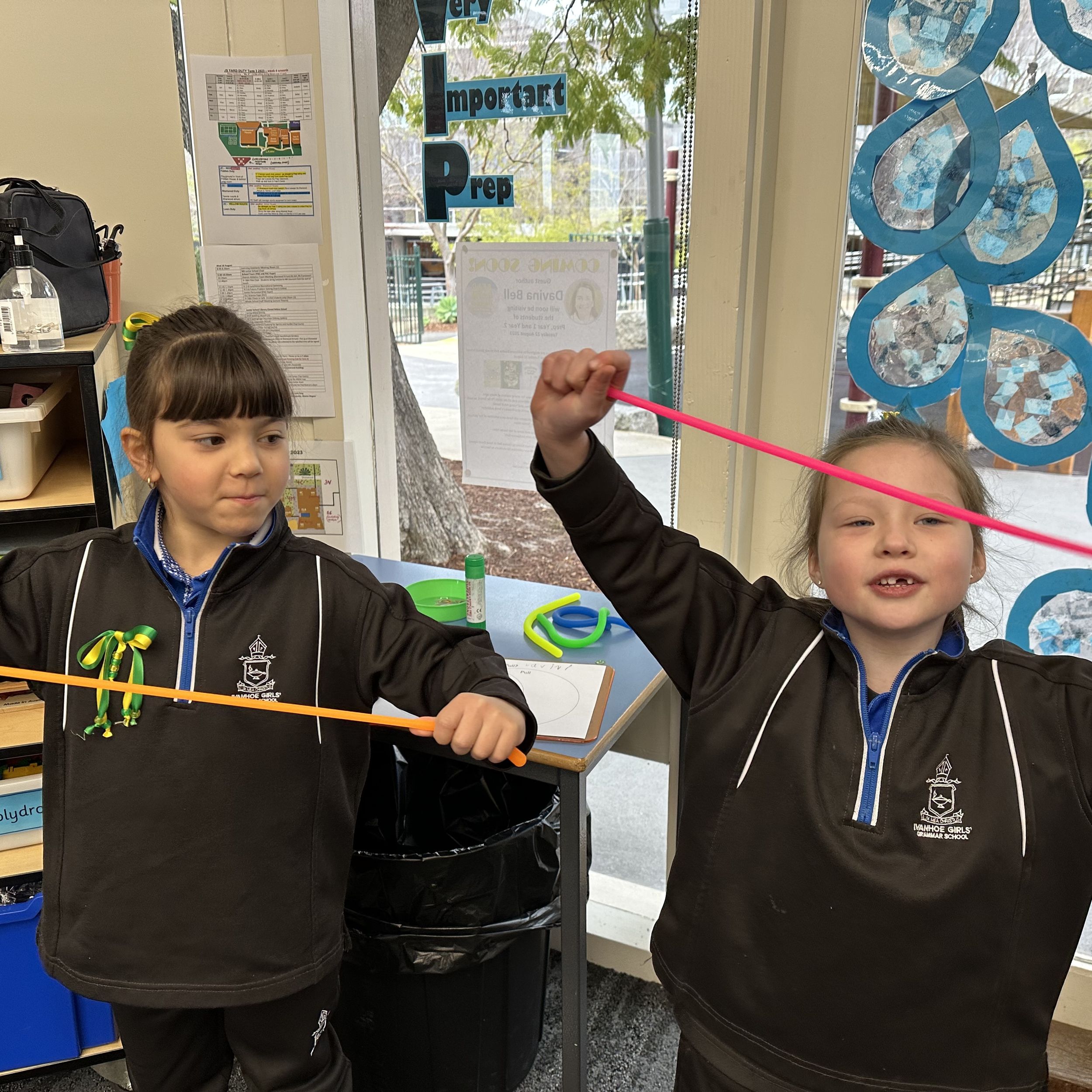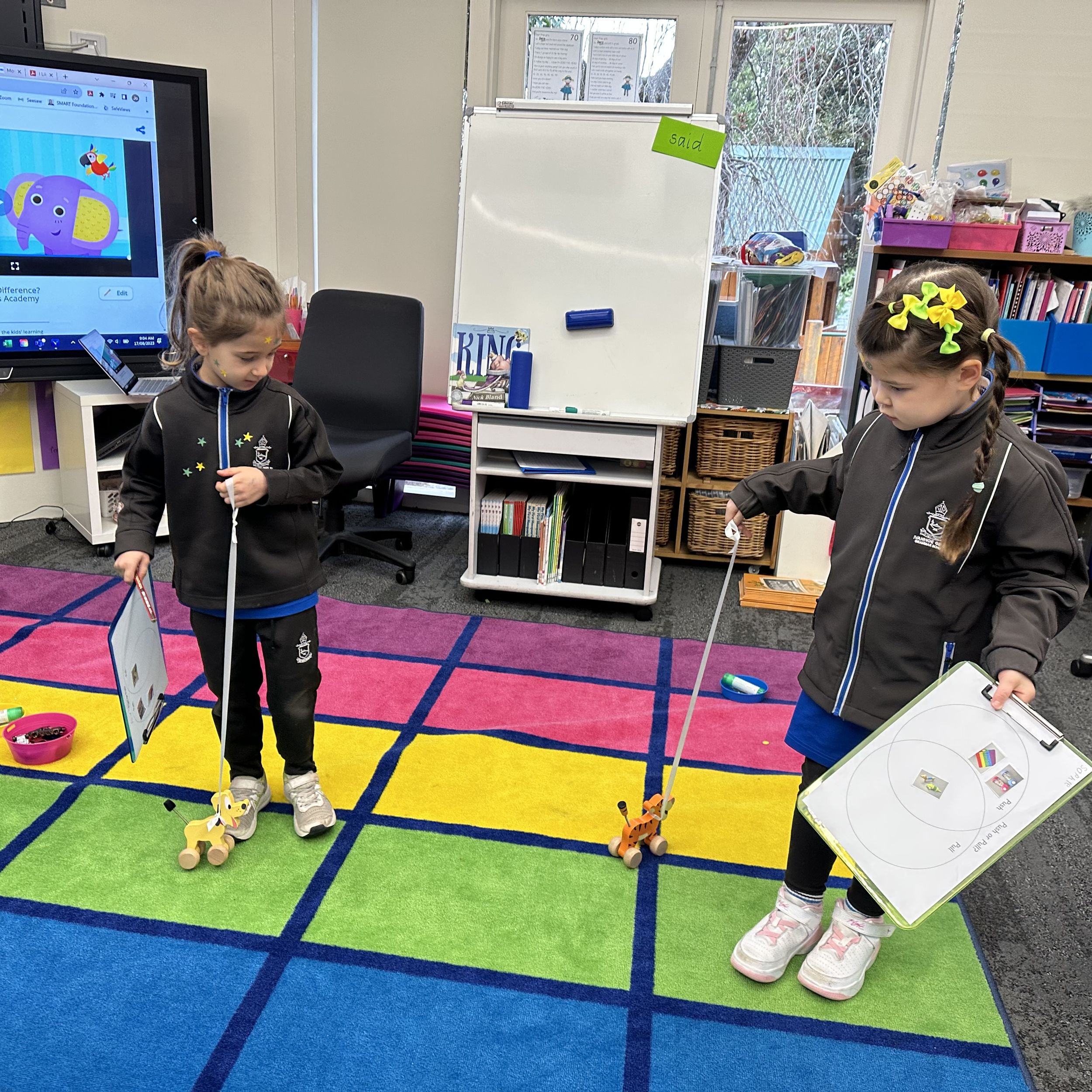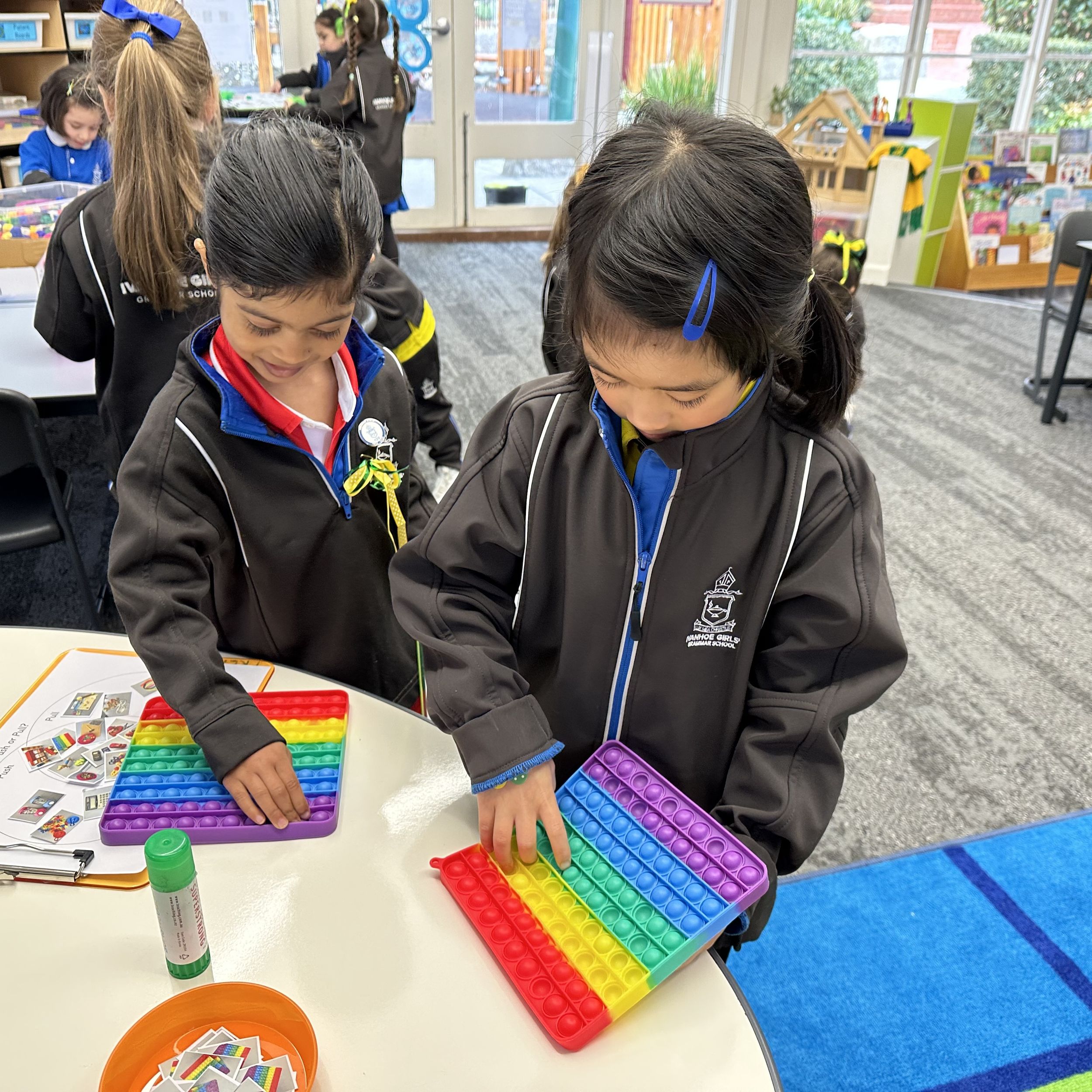Parents often ask how Science is taught in the Junior School. Science is not taught as a stand-alone subject because STEM learning is embedded in so many rich cross-curriculum learning experiences. Science Week in Junior School celebrated how we engage students in learning about science collaboratively and creatively to investigate and solve real-world problems.
This year’s National Science Week theme was Innovation: Powering Future Industries. It could not be more relevant to our students where Science and Innovation are the driving forces behind improving and solving real-world problems relating to health, environment, economy, and sustainability.
The Australian Curriculum highlights that Science is not only about understanding content, but learning how Science influences our lives and requires many inquiry skills including questioning, researching, analysing, evaluation, reflecting, and communication. Our role as educators is to inspire students and help them take an active role in developing innovative solutions to real-world challenges. Science in the classroom is taught through an Integrated inquiry that incorporates literacy and numeracy and often many other curriculum areas.
In the Early Learning Centre, parents were invited to a Science Expo which showcased biological, physical, chemical, and geological sciences. Students tested objects to see if they floated in the ‘wind machine’; they used their sense of smell to identify different plants; they learned about caring for teeth with a parent dentist; they found dinosaurs in an archaeological dig; created tall towers and much more.
At Prep M’s Assembly last week, they demonstrated how shadows are created and how this is best learned through literature and real-life experiences and investigations. Following a visit by author, Kirsty Murray, who shared her recent book, Shadow Catchers, Prep M conducted a range of experiments to explore how shadows are created by different light sources. They explored how shadows in the playground change in the morning and afternoon sunshine. They investigated how shadows get longer and shorter depending on how close the light source is.
Year 1’s integrated inquiry this term focuses on Earth Science which includes observing and understanding the sky, landscape, and weather. This inquiry was extended through a full-day coding incursion where students coded robots to travel to different parts of Australia, designing and packing into the robot’s backpack, suitable clothing for Australia’s different weather conditions.
Year 4 students helped Year 1 create a binary bracelet; binary is the system of zeros and ones that computers use to code text, images, and videos. Year 4 also explored how sunlight can be split into a rainbow as it passes through a prism. This natural discovery occurred when Year 4 realised that the edge of their classroom window in Sharwood House dispersed the light into a rainbow because it acts like a prism.
Year 5’s inquiry about the Victorian Gold Rush has a History curriculum focus, however, the teachers saw an opportunity to focus on innovation during Science Week. Students researched many STEM inventions and innovations during the Gold Rush era and created a timeline of innovation that is on display in Sharwood Atrium.
Year 6 students were inspired by a live video session with Australia’s Space Agency and heard from Katherine Bennell-Pegg, the first person to be trained as an Astronaut here in Australia.
Mrs Helen Moore
Head of Junior School
As a special Science Week event, the Year 6 students joined an exciting Teams call with Katherine Bennell-Pegg on Tuesday 15 August. Katherine is the first person to train to be an astronaut under the Australian flag. Once she completes her course, she will be the first female Australian astronaut! Before we joined this online event, we studied her in class to find out more information about her.

Katherine Bennell-Pegg grew up on the Northern Beaches of Sydney. Her interest in space grew from hanging out in her backyard where she was inspired by the stars in the sky. She realised they were not just speckles of lights, but planets! When Katherine was in Year 8 at school, she had a Careers session, where students were asked to write down three jobs that they might have when they are older. Katherine only wrote down one career, which was to be an astronaut, and refused to write down anything else!
During the call with Katherine, we learnt so much more about her. A few months ago, she was accepted into the European Space Agency to partake in a training course to be an astronaut, out of 22,500 applicants. Katherine explained that these opportunities do not come up very often so she believes there should be more people applying to roles like this, particularly females. She met the criteria which included having a STEM background and experience on field missions. She has since moved to Germany with her family to attend this vigorous training. Katherine will conclude her training in May 2024.
The biggest takeaway the Year 6 students gained from the call with Katherine was that it is just as important to take part in co-curricular activities, where you learn how to manage your time, solve problems and work in a team. She also explained to us that perfectionism is not the same as excellence, highlighting that it is important to be an all-rounder and that we can pursue any dreams that we have!!
Tiana, Anishka and Mia
Year 6
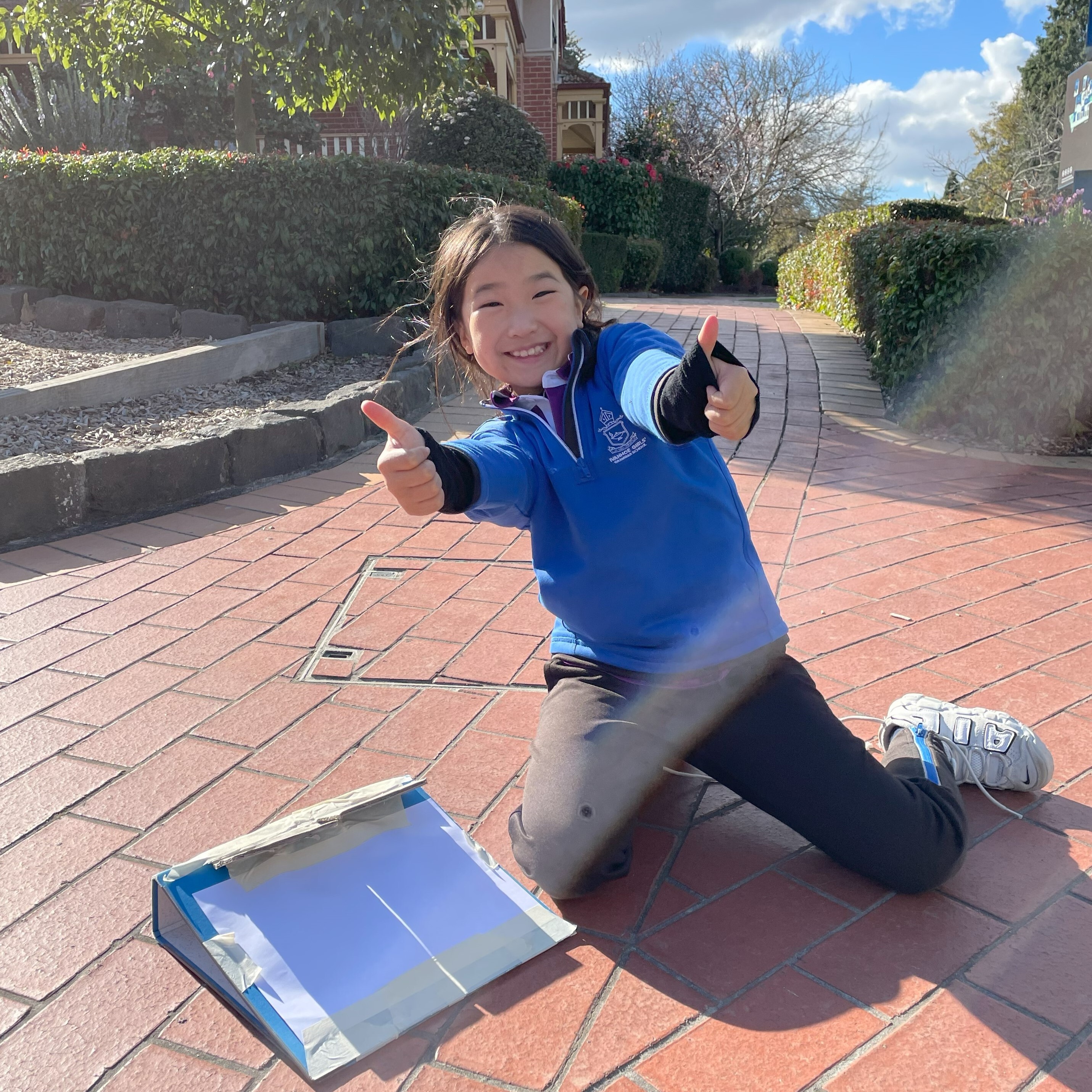
In Year 4, students begged the question: Where are our classroom rainbows coming from?
After playing with prisms in the sunlight they realised that the edge of their classroom windows is in the shape of a prism that diverts the light into its rainbow colours - a process called "dispersion".
Read below to find out what our students thought of their investigations of rainbows, and check out their rainbow successes!
In Science Week, we observed that rainbows were appearing in our classroom and we were curious to find out why. We asked ourselves the question “Why are there rainbows in our classroom?”
We used the scientific method to find out that when the white light hits the triangular prism, the light refracts and disperses into its different colours. We went outside into the sun and used different prisms to see if we could make a rainbow. We found out that the triangular prism is the best to use.
The rainbow actually comes from when the white light hits the glass on the window (a prism) at the angle, just right so that the different wavelengths disperse and that’s how the different colours are shown. (White light is made out of all the colours in the rainbow).
This sort of rainbow is different from the outside rainbows. Outside rainbows happen, when light disperses through raindrops to make the different colours appear in the sky.
In Science Week we observed how rainbows were appearing in our classroom because we wanted to know how dispersion and refraction work. We discovered how light can travel through a prism and refraction and dispersion makes them come out as a rainbow.
We went outside in the sunlight with a prism and a piece of paper and held up the prism. If you want to make a rainbow you have to turn the prism on an angle and it will reflect on the paper to make a rainbow. I learned that rainbows were made by shining white light through a prism to make a rainbow.
I think that the rainbows were coming from the little curve in the window that was shaped like a prism. The rainbows in our classroom were different from the rainbows outside because the rainbows outside are made by the sun and the rain from the clouds and the rainbows inside are made by the prism-shaped curve in the glass.
During Science Week we observed mysterious rainbows appearing around our classroom because we were curious about why they were there. Before our experiments, we used the scientific method, observed, questioned and drew a hypothesis on why we think the rainbows appeared.
We learnt about refraction, which is the bending of the light when it hits materials like glass. To do this we held up a piece of paper behind a glass of water. On the paper were two arrows facing the same way, but when we moved the paper further away the arrows moved around, sometimes even completely disappearing from view.
In our next experiment, we learnt about dispersion, the splitting of light into its rainbow colours. To do so we went outside into the sun's bright white light. Then we used a triangular prism and tilted it, reflecting onto a blank white piece of paper and small rainbows appeared!
I learnt how the rainbows appeared in our classroom, by reflecting off the prisms in the windows of the classroom onto the floors, walls and even people. These rainbows are different to the ones in the sky, as those rainbows need to reflect off the water within clouds to appear instead of through the classroom’s prism-shaped windows.
During Science Week we were investigating rainbows because they were appearing in our classroom and we wanted to find out why. We were answering the question of how the rainbows were appearing in our classroom. We used the scientific method to learn about the refracting and dispersion of light.
We learned that refraction means the bending of light and that dispersion means the splitting of light into its rainbow colours. I learned that the rainbows coming into our classroom are because of the windows in our classroom and the sunlight. What happens is the sunlight shines on the window which has a dent in it which acts as a prism that splits the light into its rainbow colours. The rainbows outside are different because they happen when sunlight travels through the rain.
During Science Week we were investigating rainbows because they were appearing in our classroom and we wanted to know how this was possible. To learn how the rainbows were appearing we used the scientific method, wrote a hypothesis and conducted an experiment.
We learnt that the white light that comes from the sun is made out of all the colours of the rainbow and that when the light travels through a prism of some sort the light bends and disperses into all its different colours creating a rainbow.
I learnt that the white light is made up of the colours of the rainbow. The rainbows in our classroom are coming from the edge of our windows because the top edge of their glass is prism-shaped. The rainbows in our classroom are different to the ones outside because they are made when the light travels through water creating bigger rainbows in the sky.
During Science Week we investigated rainbows because they kept appearing on our classroom floors and walls. The question that we were answering was, why do rainbows appear in our classroom?
To figure out what was splitting the light to its rainbow colours all of us were put into partners and went outside to experiment with making rainbows using different shaped prisms.
Something new that I learned was that rainbows appear when light shines through prisms. So where are our classroom rainbows coming from? They are coming from prisms! We discovered that our classroom windows actually have a tiny prism on the top of them and so that’s why rainbows keep appearing.
As part of our Term 3 Inquiry, Our Amazing Earth, Year 1 students participated in a full-day incursion on Thursday 17 August. The students thoroughly enjoyed the experience and created this acrostic poem together summarising their learning from our day.
Students have had the opportunity to explore the geography of Australia, reading weather charts and giving each other precise directions. They loved coding the Pixibot robots, creating clothing to take on their journeys and discovering the amazing features of Scratch Jnr.
Year 1 Students and Ms Nikki Davidson
Junior School Classroom Teacher
| Acrostic Poem | |
|---|---|
|
C
|
Creative minds in Year 1 had lots of fun coding pixibot robots and using Scratch Jnr.
|
|
O
|
Osmo was used to draw and create clothes which we could take on a journey to somewhere in Australia. We had to be careful and take our time to trace on the lines.
|
|
D
|
Discovering lots of new ways to code the robots was exciting and a little bit tricky. We had to test parts of the code before trying to write the whole thing!
|
|
I
|
Interesting features were discovered on Scratch Jnr. We learnt how to change backgrounds and make sprites with our own faces. We also learnt how to make our sprites move in different directions and created a short movie.
|
|
N
|
Never giving up was very important, especially because we were learning new skills.
|
|
G
|
Great time creating codes for the pixibots and learning about different places in Australia. We worked with each other to travel between different cities which were experiencing a variety of types of weather.
|
In Prep, we are delving into the fascinating realm of motion and forces that drive it – push and pull. During Science Week, students collaborated with a partner to explore a range of toys to see whether they relied on a push, a pull, or a combination of both.
They then documented their findings by adding a photo of the item to a Venn Diagram!
